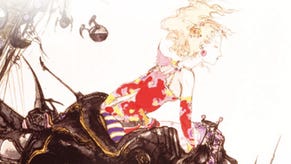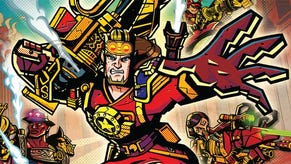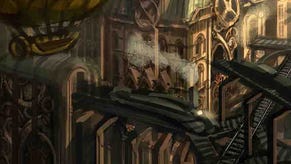Five Things You Should Know About Code Name: S.T.E.A.M.
Learn about this steampunk strategy game's paper origins and unexpected inspirations straight from the developers themselves.
This article first appeared on USgamer, a partner publication of VG247. Some content, such as this article, has been migrated to VG247 for posterity after USgamer's closure - but it has not been edited or further vetted by the VG247 team.
Longtime Nintendo developer Intelligent Systems has certainly made a name for themselves on the 3DS, and this month's Code Name: S.T.E.A.M. stands as their latest high-profile release for Nintendo's portable.
S.T.E.A.M.'s been out for a few weeks, so you've likely had time to digest most of its campaign. And, by now, you may be wondering just how Intelligent Systems' latest creation came together. Read on, and discover five things you likely didn't know about the S.T.E.A.M.'s production, straight from the mouths of the developers themselves.
S.T.E.A.M.'s Cast of Literary and Historical All-Stars Acts as Edutainment for Its Japanese Audience
"For Japanese people, we didn't understand who [any of the characters were] outside of President Lincoln. The conversation I had with Paul [Petrashcu, Creative Director] was that even though these characters weren't necessarily well-known among Japanese players, because they were famous in the US, it might be an interesting opportunity for Japanese players to learn about them through the game. Even though Japanese players aren't familiar with these characters, I thought he had a really good argument for how they could be used here." - Hitoshi Yamagami, Producer
This Strategy Game Has Roots in the Physical World
"We prototype our games on paper, and we spend a lot of time playing those. Over the course of playing a lot of this paper prototype version, I think that some of the ideas might have become a bit more solid from that form in the design process to create [Code Name: S.T.E.A.M.]." - Paul Petrashcu, Creative Director
Why Code Name: S.T.E.A.M. Focuses on Immediacy
"The reason that we [eliminated micromanagement] was for accessibility to new players. That really was the starting point for a lot of our design conversations. We wanted the player to be able to rely on what they see around them. We wanted that to be a sufficient experience in terms of providing them information about the game—without having to resort to some sort of abstract parameters and systems that would be a little bit less intuitive. So we wanted everything that existed in the game in terms of audio and visuals to communicate information to the player and not cause them to have to spend a lot of time adjusting outside of battle." - Paul Petrashcu, Creative Director

S.T.E.A.M. Once Looked a Lot More Stylized
"When we set out to recreate the feeling of [American] comic art, and tried to recreate the same pen touch—that kind of feeling to the actual stroke... We noticed that some visual elements made the game a little bit harder to play. So we made some light revisions there, and landed on the style you see in [S.T.E.A.M.] now. At first, we [created] a color palette that was really faithful to the printing technology of the time. But once implemented, we found that it did make the game a little bit hard to play in some situations. So we made adjustments as appropriate—as little as possible—as we went. And where we ended, you'll notice the enemies have sort of a colder, bluer palette to them, whereas your allies have a warmer palette—a lot of orange and red." - Takako Sakai, Art Director
The Source of S.T.E.A.M.'s Authenticity
"A lot of [S.T.E.A.M.'s] humor was brought to the floor very nicely by the localization [team] at Nintendo of America. They understood our intent, and took the dialogue and back story to some wonderful places. The jokes that they carried through, I think, work very well. Of course, we originally wrote the scenario in Japanese, but when we handed it off for translation, I conveyed to the [localization] team I hoped that they would work with as much freedom as possible because I wanted all of the contributions they could make to this project."- Paul Petrashcu, Creative Director
"Milton is one of the characters in the game, and in order to get a voice for Milton, we were reading through his wartime journals when he was alongside Lincoln. It goes without saying we were really well-versed with all the source material—we were looking at Tom Sawyer novels to make sure there were some in-jokes in there. We were looking at how we could make period Nintendo jokes; I'm sure if you look hard enough at one of the posters, there's text describing an old Donkey Kong nickelodeon, that kind of thing." - Ryan Kelley, NOA Localization





